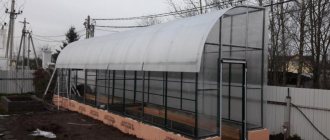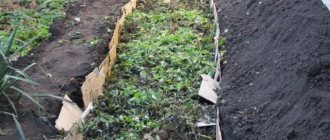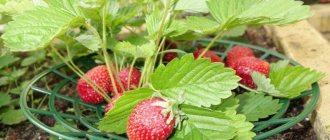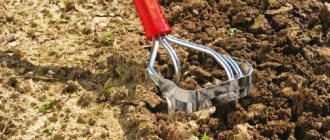Is it possible to make a corn husk with your own hands?
A homemade electric husker for peeling corn cobs will process your harvest.
Unlike factory products, the device is made at home and will allow you to use it in any conditions. The device is made from improvised materials. They use used round washing machines, defective gas cylinders, install electric motors from old appliances, and sometimes install a simple electric drill.
First, all structural elements are selected according to the drawing, fasteners and the necessary tools are prepared. Only when everything is ready does it make sense to start work. Each device must stand on a stable base; a hopper is mounted on it - a capacious cylinder of the required volume. A power switch and a magnetic motor starter are attached to the base.
To make it you need:
- Select parts made of durable material;
- Choose the unit volume that suits you;
- Carry out work according to detailed instructions.
Required Tools
You will need to select a set of tools:
- Phillips screwdriver;
- a set of keys of different sizes;
- roulette Square and ruler;
- pencil or thin marker;
- a set of drills and an electric drill;
- electric welding if necessary.
Almost all tools can be found in any household.
The parts of the unit for an electric corn husker will require:
- The base is made of reliable materials (durable plastic, aluminum, steel strips and corners).
- Homemade container for cobs. Any suitable cylindrical container will do.
- The damper.
- Flange.
- Disc with teeth.
- Switch.
- Electric motor.
Design diagrams and step-by-step assembly
After making a reliable support for the unit (you can even use a reliable table or housing from the base of a suitable device). If necessary, a stand is made by welding from a profile pipe and corners (the base will be convenient at 80-100 mm in height).
The electric motor is bolted to the base; for this purpose, through holes are prepared in the base. It is permissible to use electric welding instead of a bolted connection. The engine starter and the unit's power button are attached to the base with small bolts, after which the electric motor is connected.
The working element is securely attached to the motor shaft. It is made of a metal pipe 20 cm long and 5 cm in diameter. On one side, the teeth are cut, they are slightly bent inward, on the other side an adapter with a fastener is installed to connect it to the motor shaft.
A protective casing made of thin steel is mounted on the device, a hole is cut at the bottom and a chute is welded in for the exit of clean grain, and a hole is prepared at the top side for supplying raw materials. Instead of a casing, it is convenient to use part of a used ventilation system. This device is easy to make in just a few hours.
You can make a more attractive looking peeler if you find a used washing machine. It is more convenient for conversion to use devices with vertical loading of laundry, for example, such as the Aurika machine.
After this, you need to follow a simple algorithm:
- Prepare a round tub removed from a top-loading washing machine. If it is not available, carefully cut a simple gas cylinder.
- Prepare a steel flat disk 4 mm thick. 4-6 sectors are marked on it, 1-3 cm slits are made on them for spilling the cleaned grains.
- The tank should be 2-3 cm larger than the diameter of the disk; this space is necessary to separate clean grain.
- Teeth 8 mm long are attached to the sectors; they should have blunt ends, so the grain will not break.
- The prepared disk is installed on the shaft in the center of the housing.
- The entire unit is mounted on legs. The electric motor rotates the cob cleaning disk. To operate, you need to select a 1.5 kW motor. It is desirable that it have a speed of 500-600 per minute.
- 2 holes are prepared in the body. One is used for manual loading of cobs, and the second (cut at the bottom) is required to remove clean grain.
- It will be convenient if you install a damper at the top of the bunker. If you have a lot of corn cobs to process, this will save a lot of time. This way, it will be possible to load the container in advance, and after cleaning the corn, the valve opens and the processing process continues again.
- If you only have a high-power motor, you will have to provide an emergency power outage.
- After this, all that remains is to attach the cover to the installation body and you can test the operation of the peeler for the first time.
Tips and tricks for making
Basic recommendations that are followed when making a peeler:
- It is advisable to prepare a drawing before starting work and carefully consider how all the parts will be secured. This allows you to select all the required material and tools.
- The holes in the tank for feeding cobs and receiving grain are made with doors so that nothing can fly apart.
- It will be more convenient to work if you provide a tray for unhusked corn.
- If the engine is high-power, an emergency power outage is required.
- The hole for removing recycled materials is made so that a bag can be put on it. This device will speed up the work several times.
- To make the device more convenient to transport, small wheels are attached to it.
Corn huller: description, principle of operation, how to do it yourself
The autumn harvest always ends with its careful preparation for a long winter
This issue is especially acute for farmers who focus on growing corn, since the cob is not stored for long
That is why most people resort to a variety of methods for cleaning the grain from the base, one of which is an automatic corn huller.
From this article you will learn how to inexpensively make a corn husk with your own hands from scrap materials.
Step-by-step manufacturing instructions
To build a simple unit for cleaning corn grains, you need:
- Create a strong support for the structure (this can be a strong table, an old base from any device). The steel stand can be welded from metal corners or a profile pipe (height 80–100 mm).
- Attach the electric motor to the support using a bolted connection; to do this, drill the corresponding through cavities in the support according to the mounting holes. You can replace a bolted connection with a solid weld.
- Attach the engine starting mechanism (power button) to the support with bolts, and then connect it to the engine. A cord with a plug must be attached to the reverse side.
- Install the working part on the motor shaft. It is a steel pipe with a diameter of 5 cm, a length of 20 cm and a thickness of 2 mm. On one edge, parallel teeth are cut, slightly curved inward, and on the opposite edge, an adapter with bolted fasteners is attached for attachment to the shaft.
- Attach a protective metal casing to the structure; its lower part should contain a chute for discharging grain, and its side should contain a hole for feeding grain. The most suitable alternative to the casing is the exhaust duct of the old ventilation system.
The device can be assembled in a few hours; later, after changing the teeth for sharp cutting, it can be used to construct a chopper for corn stalks and other plants, for preparing fresh feed, as well as silage.
Important! The working part must have wide longitudinal holes, otherwise the grain will gradually accumulate in it during operation, which makes cleaning much more difficult. You can create a crusher with a more aesthetic appearance; for this you will need to get an old washing machine
You can create a crusher with a more aesthetic appearance; for this you will need to get an old washing machine.
Top-loading models, like the Aurika washing machine, are best suited for conversion.
: Washing machine corn sheller
The main stages of manufacturing this peeler are as follows:
- Create a strong support; for this you can use a small steel table or weld a tripod from metal rods.
- Place a shallow container with sides at least 5 cm high at the top of the support; it will serve as a collection container.
- Make a hole in the bottom of the collection container, 1 cm wider than the thickness of the shaft.
- Attach the motor to the bottom of the support so that the shaft is pushed up through the bottom of the collection container.
- Cut the bottom of the washing machine drum and attach small legs to it with bolts or a weld.
- Secure the drum over the shaft, exactly in the center, with the legs resting on the bottom of the collection container.
- Install a cleaning disk on the shaft; its diameter should be 1–2 cm narrower than the size of the drum. It can serve as a lid from a saucepan with numerous holes up to 10 mm in diameter and welded small teeth up to 8 mm high.
- Mount a cover from the remains of the drum bottom; secure it using curtains with a bolted or welded connection.
- Screw the trigger mechanism (switch) to the support and connect it to the engine, the reverse part should be attached to the cable with the plug.
Important! For the design of the device, you should choose a motor that provides a rotational torque of the hulling disk of no more than 50 rpm, otherwise the grains will be damaged, which makes them unsuitable for long-term saving. The corn huller is one of the most important and sought-after devices for the modern farmer.
A corn huller is one of the most important and sought-after devices for the modern farmer.
There are many units of this type on the market, both industrial and home-type, but you can also make it yourself, using improvised materials.
To do this, you will need a small set of tools, as well as spare parts from old equipment, including an old washing machine.
Principle of operation
The design features of the mechanism allow it to efficiently peel corn cobs. Most often, these devices are a hollow cylinder of small diameter to which the shaft of an electric motor is connected. A disk is attached directly to the shaft, which will peel the cobs. It has many low rounded teeth, they protrude approximately 6-8 mm. Many holes with a diameter of 10 mm are drilled throughout the disk.
Cleaning occurs after starting the electric motor, which spins the cleaning disk. He tears the grains from the cobs rotating in the drum. After that, the grains are removed from the drum through holes in the disk, entering a collection container. Unpeeled (and therefore heavy) cobs move under their weight to the bottom of the drum, and peeled, and therefore light, cobs rise up. As a result, the cobs are cleaned of corn grains.
The corn sheller is also made according to a different scheme. They are also called drumless devices; they have an electric motor mounted on a strong support, a long empty cylinder is mounted on a shaft, and it has teeth bent inward. The structure is closed with a casing, to which there is an outlet chute, which serves to remove clean grain out. In this device, each cob is cleaned in turn. The grain goes down, and the bare cob remains in the person’s hands.
Corn huller
16.07.2018
Pets and birds love corn and grow quite quickly from it. But the problem is that there is no such small equipment for the farmstead that could quickly separate the grains from the cob, which would make it possible to prepare this food in large quantities. Our ancestors had a very simple manual device: a spring compressed two disks with twisted grooves. It twisted the corncob and stripped the grain from it. Modern craftsmen make a similar peeler, only electric. For those who want to take advantage of their development, below is a description of the product and the principle of its operation.
low-power low-speed electric motor 0.6-1 kW up to 1200 rpm; a piece of thick-walled pipe with an outer diameter of 45 mm, a length of 350 mm; two bearings No. 203.
The mechanical part of the peeler should be located in a wooden (plywood) box, which has a protective function during operation. It can be mounted on a table. The box should have a removable or sliding lid and a cone-shaped body with a hole at the bottom through which the corn grains will be poured into the bag.
Device manufacturing process:
1. Grind a piece of pipe: for the bearing attachment - up to a diameter of 40 mm, for the pulley attachment - up to 38 mm. 2. At the opposite end from the pulley at the end of the pipe, use a triangular file to cut teeth in increments of 6-7 mm. Bend them inside the pipe by 2-3 degrees. 3.
At a distance of 25 mm from the teeth, drill four holes with a diameter of 20 mm in the pipe - during processing of the cob, corn kernels will fly out through them.4. Place the bearings on the groove and secure this unit on the inside of the box wall through the holes in the bearing seats.5. Secure the rim on the outside of the box and tie a grain bag to it.6. In the wall that is located opposite the working pipe, drill a hole equal to its diameter. 7. At its edges, screw a guide funnel in the form of a truncated cone. This detail, despite its simplicity, plays an important role. Firstly, it significantly reduces grain loss. Secondly, it increases the level of safety
Use your hand to feed an ear of corn onto the teeth of a rotating pipe. The feed depth is limited by the leading edge of the guide funnel. The second cob pushes the first one, etc. they themselves, already without grain, come out from the opposite end of the pipe.
At home, corn cobs are peeled by hand.
Usually they rub cob against cob. This is very low-productivity and tedious work.
This method is unacceptable for those who grow corn in large quantities due to low productivity. Therefore, in the era of advanced technological progress, people began to come up with different electric corn husks.
The technology for separating corn kernels from the cob differs depending on the design of the corn husk itself.
Today the Internet is full of different types of designs for electric corn hulls. Carefully studying the operating principle of each of them, we designed our own design, later LPK-02. During the manufacture and testing of LPK-02, we tried as much as possible to eliminate the shortcomings of previous designs.
LPK-02 does not break corn cobs and does not crush grains. In the future, the grains can be used for sowing.
LPK-02 100% cleans the corn cob from grain, which is not noticeable in other types of structures.
The productivity of the corn husk, depending on the humidity of the cob, ranges between 500-700 kg/hour.More…
How to separate corn from the cob at home: how to peel it manually and quickly?
Corn is a nutritious and tasty cereal loved by many gardeners.
Its ripening occurs at the end of August or beginning of September. Before preparing many delicious dishes, you have to go through the stage of separating the grains from the cob. This can be difficult to do if you don’t know how to quickly peel the cereal. The popularity of this cereal is explained not only by its wonderful taste, but also by its valuable nutritional properties.
It contains about 26 elements of the periodic system. It contains lysine and tryptophan, essential amino acids that the body cannot produce on its own.
Regular consumption of this cereal can reduce the risk of cancer and heart disease. This nutritious product has a low calorie content, only 122 kcal per 100 grams of boiled cereal.
Therefore, it can be a component of the diet menu.
Peculiarities
The cereal is used simply in boiled form, and also for preparing many delicious dishes. The grain from it is used to prepare porridge, and valuable corn oil is made from the germ of the grain. Corn flour is used to bake tasty and healthy bread. Canned grains are an addition to many dishes; they are used for salads and also for frying.
Harvesting grains for cooking and storage begins at the stage of milky-wax ripeness, in August.
Signs of ripeness: dried cob wrapper, brown threads at the edges, smoothness and yellowness, release of milky juice when pressed with a fingernail.
To preserve the valuable properties of the cereal, it is stored canned or frozen. At home, grain corn is stored inside canvas bags, cardboard boxes, and plastic jars.
Fresh corn is a favorite treat for many people. The only frustrating thing is the difficulty of peeling it, as well as the separation of the grains themselves. This process takes quite a lot of time if you don’t know how to clean the cereal correctly. Especially if grains are needed for harvesting and large volumes of harvest have to be processed.
Separation methods
Most people are familiar with the painful and tedious process of peeling cobs from stigmas and hairs, which are even more difficult to remove after cooking. If corn is a regular part of your diet, you need to learn how to peel corn.
The main condition for the rapid release of grains is thorough drying of the crop. If you only need a few grains to freeze a few bags or preserve jars, you can use several methods of manually shelling corn.
To free the cob from fibers and leaves, you need to cut off its top and bottom with a knife. The top part is unsuitable for food, so you can safely cut it off by a centimeter. Now, by easily unrolling the leaves, you will clean the head of cabbage faster.
You can put them in the microwave at minimum power. After 2-4 minutes, not a single corn silk will remain on the cob. When preparing grains for the winter by freezing, cleaning is done a little differently.
Heat the oven and keep the cobs and leaves for about half an hour. Now you can easily peel the still hot corn. At the base of each cob, about two centimeters are cut off so that all the foliage is captured. All that remains is to grab the opposite end and make sharp shaking movements. Foliage with hairs is easily separated.
A simple way to clean a head of cabbage from grains. You need to take a small knife and use it to clean one longitudinal row. Then it becomes easy to clean each row by prying several grains from the side at once with the same knife.
You can do this just as quickly with your fingers. To facilitate the process, the corn is dipped in boiling water for a couple of minutes, after which it is immediately immersed in cold water. There is a way to simply cut the grains with a sharp knife manually from top to bottom, placing the cob vertically in the container.
Well-dried cobs can simply be rubbed against each other with force. This leads to the grains flying around. If you put them in boiling water and let them sit for 30 minutes, you can peel them by applying pressure with a blunt knife along each row.
Manual peeler
How to separate corn from the cob in an even easier way? A head of cabbage can be quickly cleared of grains using a manual peeler. It can be automated or work by rotating the handle, similar to a meat grinder. The process is very easy:
- the cob must be cut off at one end to give it stability;
- to avoid splashing of corn juice in the process, the unpeeled vegetable with leaves should be placed in boiling water for 10 seconds and immediately dipped into cold water;
- the head of cabbage is placed vertically on the cut stem in a large bowl;
- A hand peeler is placed on top of it and lowered down under slight pressure.
The tool is equipped with a sharp stainless steel blade that is suitable for any cabbage width. After cutting, the grains are carefully collected inside the unit.
All that remains is to remove the peeled grains from the sheller to use for cooking. This device is especially useful for harvesting large quantities of grains for the purpose of canning at home. The advantages of the unit are its strength, capacity (up to 200 grams of grains), ease of use.
There are also large devices for processing corn - electric shellers with a capacity of more than one bucket of cobs. If you need to clean half a ton of crop, then such a device can handle it in an hour. Some craftsmen make such units with their own hands.
Loading…
Source: https://agronomam.com/ovoshhi/kukuruza/kak-chistit.html
How to make it yourself
A homemade conditioner is suitable for personal use or small farms.
Advantages of a homemade unit:
- low cost;
- confidence in the reliability of the design.
Flaws:
- low performance compared to purchased ones;
- unpresentable appearance.
What you will need: what materials can such a device be made from?
To perform quality work you will need:
- motor with a power of about 1 kW;
- metal sheet 3 mm thick;
- hardened steel for the working part;
- bolts, washers and nuts;
- any container of suitable size as a receiving hopper.
To complete the work you will need the following tools:
- welding machine;
- locksmith tools;
- grinder with cutting wheel;
- electric drill;
- grinding machine.
Blueprints
The grain crusher consists of the following units:
- valve for regulating the flow of grain into the working chamber;
- grain bin;
- electric motor on/off button;
- electric motor;
- sleeve;
- axis;
- washer;
- screw;
- screw;
- base;
- working chamber housing;
- container for crushed grain;
- metal mesh (sieve).
Diagram of the crusher working chamber:
- base;
- working chamber housing;
- screw;
- sieve.
Step-by-step instruction
Stages of making a crusher with your own hands:
- Take a sheet of metal and drill a hole in it slightly larger than the diameter of the motor shaft.
- Attach the motor to the sheet with bolts. The motor can be taken from a vacuum cleaner or water pump.
- Make a working chamber. Cut a strip 4 cm thick from a sheet of metal and bend a ring with a diameter of 30 cm.
- Weld the ring to the base.
- Attach the working part to the engine using a coupling.
- Make a knife. A knife from a lawn mower or grinder will do. The length of the working part is 1-2 cm less than the working chamber.
- Attach the knife to the coupling using bolts.
- Install the coupling onto the engine.
- Attach the sieve to the bottom with studs and nuts. To make it, take a metal mesh with 3 mm holes.
- Install a receiving hopper. Make a hole with a diameter of about 3 cm in the upper part of the working chamber. Weld any cone-shaped container to the hole and make a valve. It will serve to regulate the flow of grain into the working part of the bunker.
- Place the finished product on a container that will become a hopper for receiving raw materials.
How to properly process dried corn?
To prepare dried cereal deliciously, you should perform the following manipulations:
In a saucepan, combine dried corn kernels (50 g - about 1 cob) and water. The liquid should cover the mass by 1-2 cm. Immediately add a little salt and spices.
- Bring the mixture to a boil, keeping the lid open. Then close the lid, reduce the heat and wait just a minute. Let the mixture sit for 10 minutes, after which it needs to be put on the stove again.
- We continue this way for 2 hours, gradually adding boiling water so that all the moisture does not evaporate.
Before cooking pre-dried corn, you can soak it in cold water for 5-6 hours. Then you won’t have to insist on it while cooking, you just need to keep it on the fire for an hour.
Purchase
Before making a purchase, pay attention to the characteristics of the conditioner:
- Purpose. For use on small farms or for personal purposes, a factory-made or self-assembled hammer crusher is suitable. Large farms will have to purchase a factory model.
- Power. The device is selected based on the maximum volume of grain that will need to be processed.
- Performance. For small farms it is not necessary to purchase a unit with high productivity. The main thing is to decide how much ready-made feed the poultry and livestock will need.
- Dimensions. Before purchasing a shredder, you need to choose a place where it will be stored.
The best manufacturers
We suggest considering the most popular models.
"Elektromash IZ-05M"
Designed for medium-sized farms. Engine power: 800 kW. Grain processing capacity: 170 kg/hour. Weight: 6 kg. Receiving hopper volume: 5 l.
"Piggy"
The main advantages of the model are its small design, reliable materials and ease of use. Manufacturer: Russia. The receiving hopper is designed for 10 kg. Productivity: 300 kg/h grain. Power consumption: 1.9 kW.
"Farmer IZE-25M"
Designed for medium-sized farms. Engine power: 1300 kW. Productivity: 400 kg/h grain. Weight: 7.3 kg. Adjustment of grinding degree. Without reception bunker.
"ThermMix"
The advantage of the shredder is low power consumption. Engine power: 500 kW. Productivity: 500 kg/h grain. Device warranty: 3 years. Weight: 10 kg. Reception hopper: 35 l.
Where to buy and how much it costs
There is a huge selection of manufacturers and platforms for selling agricultural machinery.
Where to buy a corn conditioner:
Or you can make the device yourself.
The cost of a corn crusher depends on the mechanism of action and productivity:
- The cheapest and easiest to operate are manual conditioners. Their cost starts from 2000 rubles. The disadvantage of such conditioners is low productivity.
- The cost of electrical appliances starts from 15,000 rubles. The price varies depending on power, performance and size.
Making a knife for equipment
A do-it-yourself grain grinder must be made using a knife, which must rotate at high speed, due to which the grain will be ground; this element must be performed separately. To do this, you will need to use a steel plate, which should have dimensions of 15 × 200 millimeters, while the thickness should be 1.5 m. It is preferable to choose the strongest materials. In addition, you can use car holders or other parts that can be borrowed from household appliances. The knife should be sharpened in the form of a blade; for this, both edges must be processed towards the axis of rotation. When making a homemade grinder with your own hands, you can experiment with the shape, giving the blade the appearance of a propeller or bevelling the corners. Using sandpaper, you can adjust the plate horizontally and vertically. Afterwards, in the central part of the working surface of the knife, you need to make holes with a diameter suitable for the shaft of the vacuum cleaner motor. The knife must be fastened to a threaded tail using a bushing, two washers and a nut.
Do-it-yourself corn husker: drawings with video
Corn cobs don't last long
When harvest is over, it is important to process them quickly. Manual processing of large volumes of corn is a monotonous and tiring task
To save time and effort, you can make your own corn sheller.
general description
You can make your own corn husker using a drawing. Peelers are divided into 2 types:
- Big. Used on large farms. The huller is designed for different sizes of corn. It is filled in buckets (from 8 kg) or bags. Cleaning time is 3-5 minutes. In 1 hour of operation, the device processes 500 kg of crop.
- Small. Designed for use at home for peeling one cob. It is inserted into the hole of the device and held with your hand throughout the peeling process. The motor of a small peeler burns out when there is a large volume of work.
The electromechanical unit has 2 holes: the first hole is where corn is filled or inserted, the second hole is where cleaned grain comes out. Bare cobs are unloaded from a large drum. They are taken out by hand. Some types of devices simplify the work: they push empty cobs away from the grain.
A corn husker is a simple tool to make; however, you need to select the dimensions of the parts that correspond to the amount of harvest.
How to make?
To make a corn husker with your own hands, it is important:
- Use of durable materials and parts.
- Selecting the appropriate volume of the device.
- Availability of detailed, step-by-step instructions.
To create an electric corn husk, prepare:
- The basis for the unit is made of durable material (aluminum, dense plastic).
- Reservoir for cobs. It could be an old, unnecessary thing (a hopper from a washing machine, a cylindrical container).
- Damper on the body.
- Disc with teeth.
- Toggle switch (switch).
- Scraper.
- Flange.
- Motor.
The creation of the structure begins with fastening the base and tank with rivets. The grain removal mechanism is connected to the tray shield. A toggle switch with a magnetic starter is installed on the wall of the tank. Holes (no more than 14 mm) are drilled into the disk with a drill, teeth are welded, semicircular for farming or sharp for small harvest volumes.
The tray has 2 holes: one for grain and the other for empty cobs. 2 plates of 2 cm each are attached to the bottom of the chamber. They are needed to support the rubber scraper. Its task is to direct corn cobs from one side to the other. The flange is attached to the motor shaft.
Homemade corn husker
The drawing diagram of a corn huller provides a base - this is a cylindrical aluminum pipe from a water irrigation system, connected with rivets. It is bolted to the base of the device. The grain separator is connected to the tray shield with rivets. The toggle switch is attached to the side wall of the cylinder. The disc is equipped with semicircular teeth. To increase the rigidity of the disk, a 6*35 mm tire is welded.
2.5 cm plates are welded perpendicular to the disk. A rubberized scraper strip is bolted to the plates. The bottom of the bunker is equipped with a tire; the cylinder is screwed to it using bolts.
There is a flange on the electric motor shaft, and a disk is attached to it. At the end of the flange there are 3 leading fonts. The gear disk rotates counterclockwise.
This promotes self-tightening of the bolt and facilitates the exit of empty cobs through the door, which closes during shelling.
Device Description
Before you begin calculations and design of the future unit, you need to figure out what kind of device it is. A peeler, or as it is called, a grain crusher, is a mechanical or electromechanical device that allows you to instantly clean corn grains from the cobs.
Did you know? Corn is widely used not only in the food sector, but also in industry, for example, for the production of alcohol, plastic, glue, cosmetics, paint, and plaster.
Due to biological characteristics, corn on the cob cannot be stored for a long time. By spring, a harvest harvested in the fall can become an environment for the development of fungi and other parasites that impair not only the germination of grain, but also its nutritional characteristics. In addition, the grain removed from the base helps to reduce the total area for storing the corn crop by several times, which is important for small farms.
Such devices are divided into 2 types:
- Industrial — capable of cleaning about 500 kg of crop in 1 hour of operation. Such peelers are large in size and require at least 2 auxiliary workers, since the crop is filled in buckets or bags. Installed only on large farms.
- Amateur — small devices with low power, capable of processing up to 100 kg of fruit per hour of operation. Used on small farms or in households.
Depending on the type of work, the peeler is:
- automatic — has an electric motor of different power, which is the main acting force;
- manual — driven by a mechanical shaft system, thanks to human participation;
Regardless of the type of design and principles of operation, such units have the following components:
- drum - a cylindrical container in which the process of extracting grain takes place, having a hole for filling fruits and collecting tops, as well as a cavity for removing cleaned grain;
- shelling element - installed on the drum shaft, directly affects the cobs, separating the grain;
- collection container - the outer part of the unit into which clean grain arrives;
- protective casing —provides protection for rotating mechanisms from external influences;
- drive - a set of components that ensure the operation of the entire mechanism. There are both automatic types and mechanical ones, driven by manual force.
Did you know? The world's first usable electric motor was created in 1834 by Russian-German scientist and inventor Boris Semenovich Jacobi.
Making a corn sheller
A corn chopper helps you process large quantities of corn cobs in a short period of time. The device comes in two types: for processing one cob or for processing several kilograms in one cycle of operation. Industrial machines can grind up to 500 kg per hour of operation, but they are impractical for household use. A small shredder for a private farm can be easily assembled yourself.
How does a shredder work?
The corn sheller has an electric motor that rotates the cutting element. In a homemade device, you can use an iron disk with teeth welded on it. During operation, the disk makes up to 50 revolutions, knocking corn kernels out of the cobs. Clean grain is poured into the container through the gaps between the working chamber and the disk, as well as through the slots in the disk itself. Lighter peeled cobs rise to the top and fall out through a special hole. Instead of a disk, you can use a pipe with teeth welded on and bent inward.
The corn cob chopper does not consume a lot of electricity, and its compact size makes it easy to store and move the device.
Washing machine peeler
Before making a crusher, you need to decide on the volume of the working chamber and familiarize yourself with the drawings. They will help you understand the design of working units and possible fastening of parts. You can find detailed diagrams on thematic forums.
The most important thing for a corn cob chopper is a reliable and durable base to which the hopper will be attached.
It can be made from a metal corner or wooden blocks. The hopper is made from the body of a washing machine. A magnetic block for turning the engine on and off is mounted on the outside of the bunker.
A cutting disc is placed inside the grain crusher, in which small holes are first drilled. The diameter of the holes should not exceed fourteen millimeters. You should also weld several teeth onto the disk, the height of which is about eight millimeters. From the bottom of the working chamber, perpendicular to the disk, two plates, each two centimeters wide, are attached by welding, and a small rubber scraper is attached to them. The role of the scraper is to direct the grains falling out of the cobs. The chopper flange is attached to the motor shaft.
A small hole is made on one side of the working chamber of the corn crusher, under which a tray for ready and clean grain is attached. On the opposite side, make a larger hole to remove empty corn cobs. The working chamber of the chopper must have a lid with a lock.
Pipe peeler
A do-it-yourself corn sheller can be made from a piece of pipe and a drill. This apparatus consists of:
- Housings,
- Apparatus for chopping cobs,
- Basics,
- Drills,
- Watering cans,
- Khomutov.
The working container of the chopper is made from a piece of pipe. The diameter of the pipe depends on the volume of raw materials intended for processing. An even number of teeth are made in the front part of the pipe cut, and every second tooth is pressed against the axis. Using a grinder, several rectangular holes are cut through which the finished husked grain will be poured into the watering can. On the opposite side, a cutting disc with a tail is attached to the shaft.
The body of the corn cob chopper is made of durable steel. The body is conventionally divided into two parts: in the front, a rectangular hole is made for loading cobs, and in the back, a similar one is made for the exit of heads of cabbage, cleared of grains. The body is bolted to a base welded from steel angles.
The tail of the shaft, to which the cutting disk is attached, is clamped in the drill chuck. The drill itself is attached to the base using clamps. The device turns out to be less powerful than from a washing machine, but it is quite capable of shelling grain for a small private farm and for obtaining seed material.
Assembling the Corn Husker Base
The body of the peeler (see Fig., item 1) was made from a gas cylinder, cut in half.
I cut two holes: d 5 cm (A) for draining grain, d 15 cm (B) for removing peeled cobs. In the middle of the bottom I drilled a hole for the flange motor shaft (3), which was secured from below with a bolted connection.
I put the cobs into the sheller, close the lid and turn it on. When the flange rotates, they fall on the studs and rub against the body; the grain falls down through the gap and is poured through the hole (A) into a substitute container. To remove cobs without grains, I open the valve (B) and they fly out of the housing.
Note: It is not advisable to use the engine at more than 1450 rpm - it will crush the corn.
How to make
Such devices of different power and different volumes can be purchased. They are on sale, their advertisements can be found on the Internet. But most craftsmen prefer to make them themselves. A do-it-yourself corn sheller is made from available materials. Old washing machines with a round body, used gas cylinders, motors from some old appliances, even just a drill can be useful.
In order to make such a machine, you first need to decide on the volume of the harvest to be processed, then find it on the Internet, ask somewhere on a forum, or draw a drawing yourself.
Diagram of assembled corn hulker
According to the drawing, you need to select all the components, tools and fasteners that may be needed. Only after this can you begin the manufacturing process itself.
Each unit must have a strong, stable base; a hopper made of a washing machine or a cylinder or an aluminum pipe is attached to it - a sort of capacious cylinder. A magnetic starter with a toggle switch to turn the engine on/off is placed on its wall. The grain separator is connected to the tray shield.
The top of the bunker needs to be closed, which means they make a lid that is easy to lift, but which will not open while the engine is running.
Cleaning corn in different types
The basic principle of cleaning corn does not depend on which cob is used: raw for long-term storage or pre-boiled for consumption in the near future.
In both cases, it is necessary to remove the grains that sit tightly on the cob.
Boiled
Boiled corn is a tasty, satisfying and healthy independent dish, which is distinguished by the softness of the grains and the relative ease of their separation.
However, it is in this softness that the main difficulty of cleaning lies: if the impact is too harsh, the grains simply break, and instead of a crumbly dish, the result is, although tasty, a mushy mass.
For quick and high-quality cleaning, boiled corn is recommended:
- first cut crosswise into several small pieces;
- Use the blunt side of a knife to separate one row of grains;
- separate the next rows by gently pressing on their bases with your fingers or the blunt side of a knife.
Raw
Raw corn is much tougher than boiled corn. Its grains sit very tightly together, so separating them requires much more effort.
The principle of manual cleaning is in many ways similar to the previous one: just carefully remove one longitudinal row, and all the others will be removed much easier.
This is interesting:
How to Freeze Corn on the Cob at Home
Sweet corn: choosing the best variety and growing it correctly
Where and how to store boiled corn correctly: various methods











